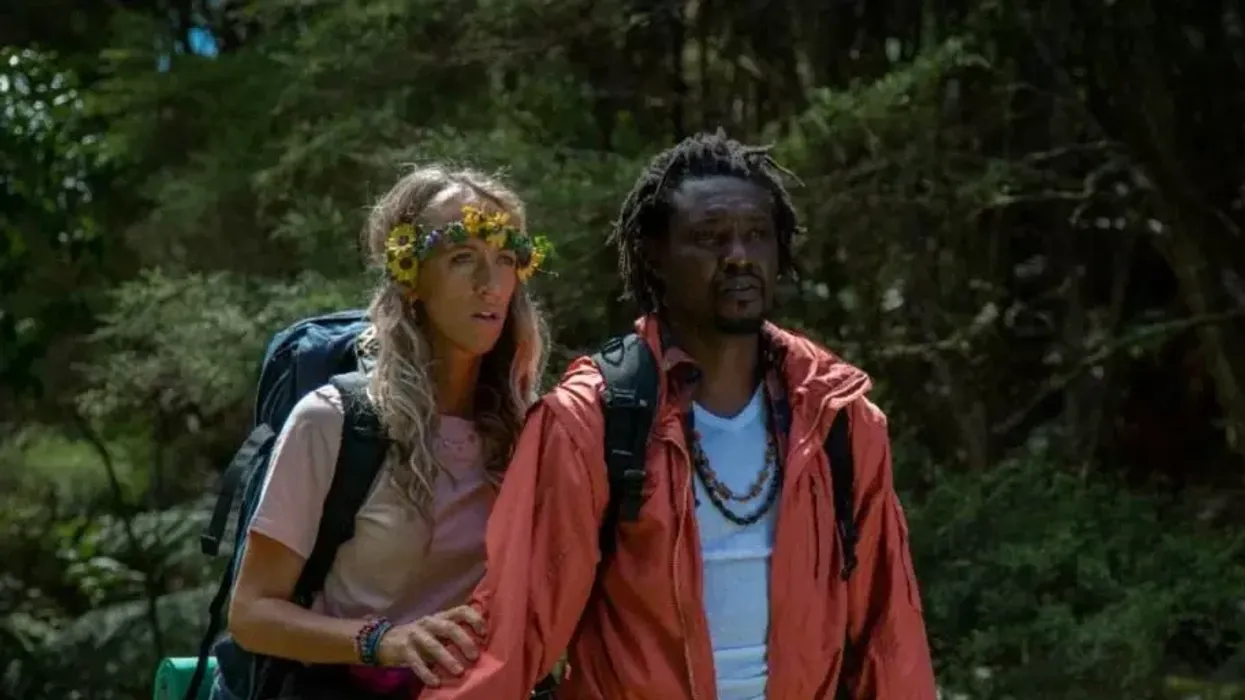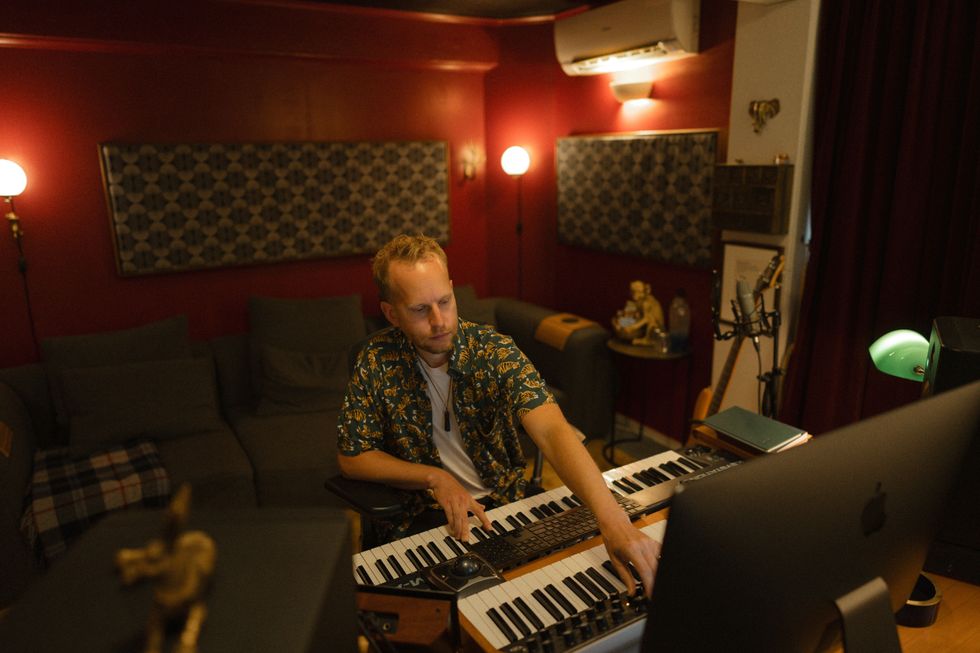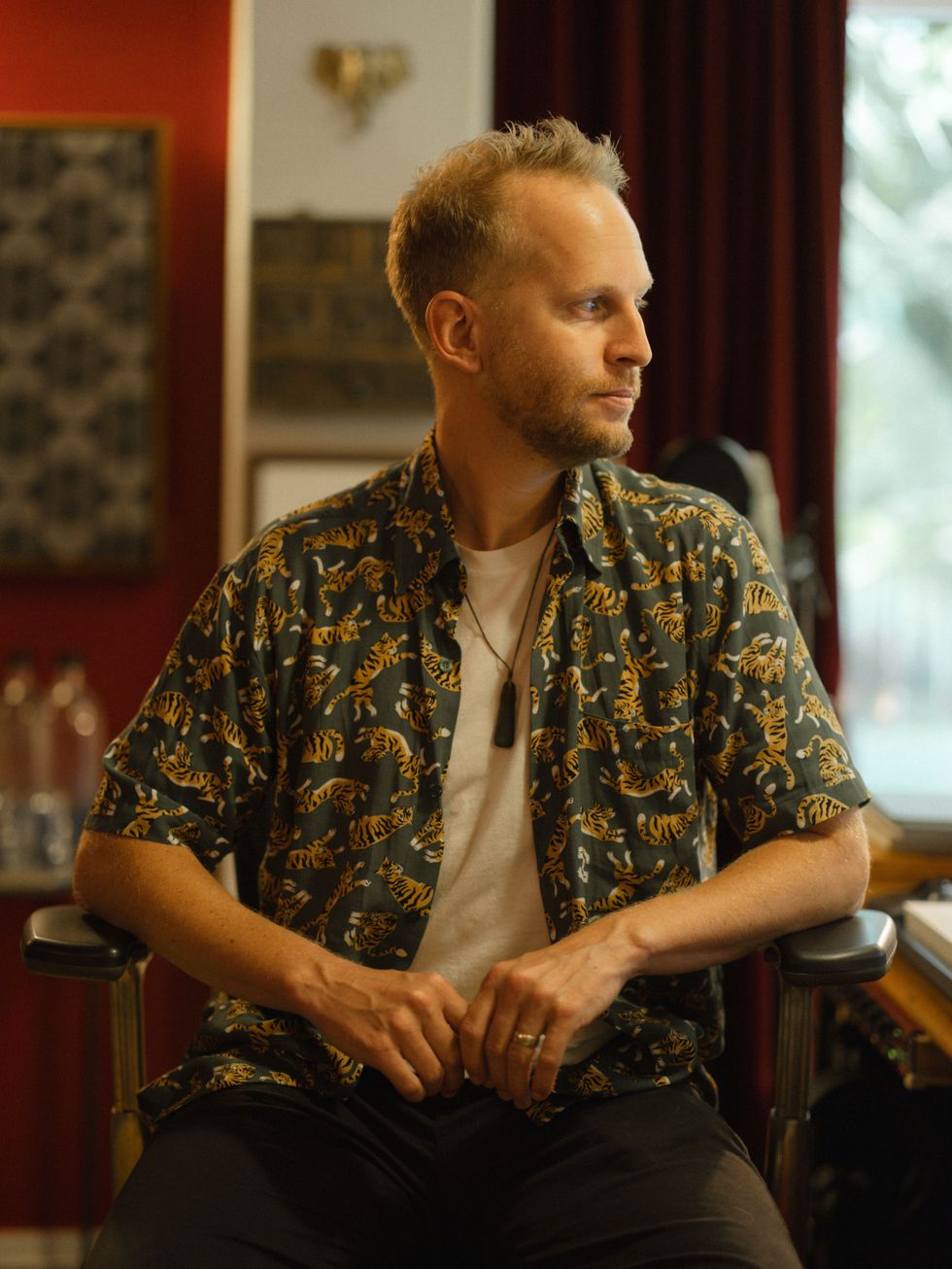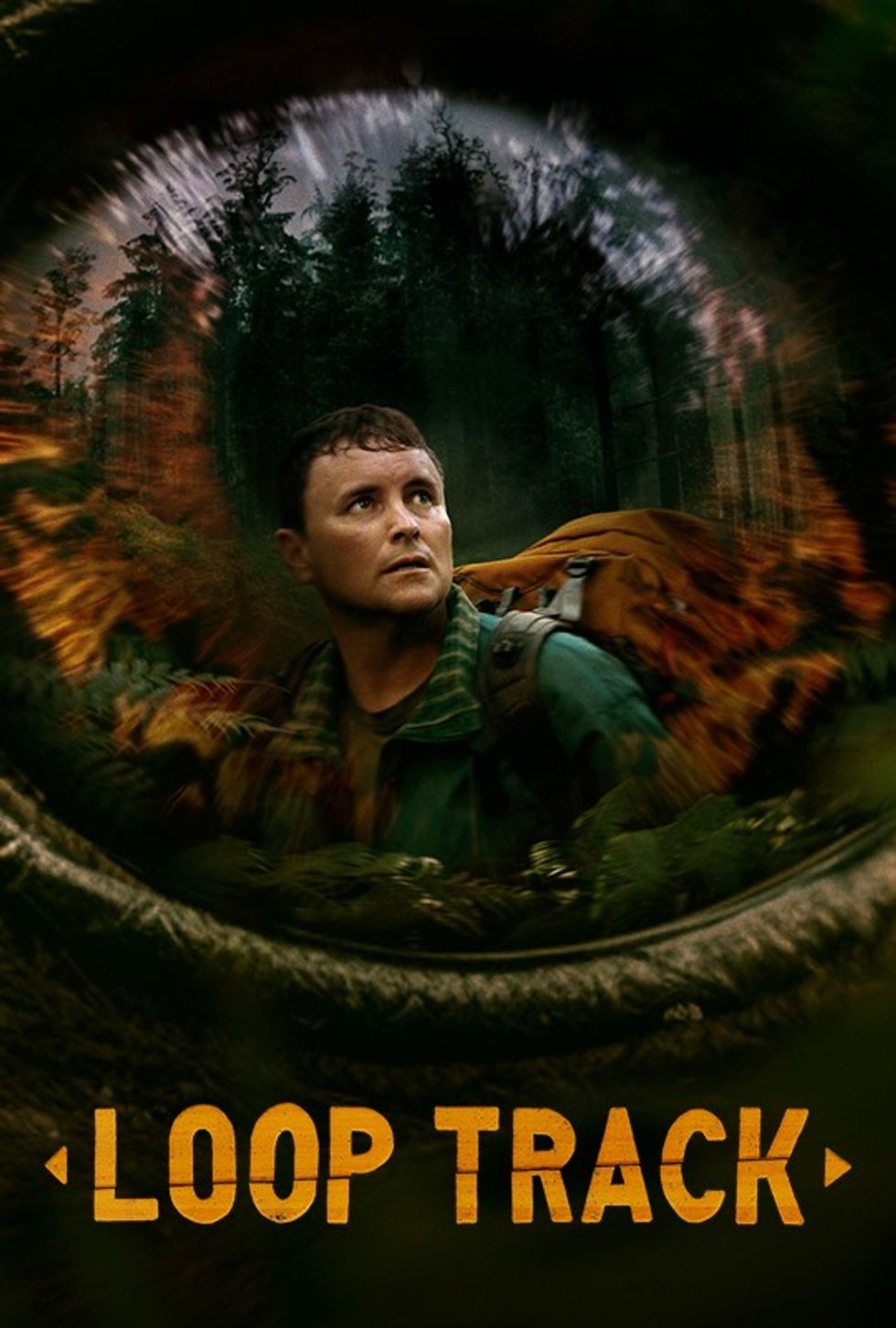How to Properly Score A Jump Scare
Composer Mike Newport Discusses His Musical Approach to Jump Scares in Loop Track.

Loop Track
Audiences have seen the story play out numerous times, a mysterious noise comes from downstairs in the middle of the night, someone goes to check it out, the music begins to build, and a cat jumps out of nowhere accompanied by screeching music.
Horror fans have become all too familiar with the immediate, heart-pounding fright of a jump scare. So how does one create a proper jump scare without it feeling cliche? Besides a proper set-up and a tension relieving payoff, an unsettling score is a major component.
Composer Mike Newport is no stranger to creating the perfect jump scare, especially with his latest horror film Loop Track, which follows a man getting stalked by something sinister in the New Zealand wilderness.
When discussing the frightening jolts throughout the film, Mike says, “I think the key with jump scares is being really careful to not inadvertently foreshadow them. Often there will be a really obvious pull back in score and sound before a jump, or sometimes a clear building rise before them; so I tried to bridge this gap and always leave something in; lead the audience along wondering whether nothing would happen, or a huge jump.”
Mike goes into more depth about this topic and creating his Loop Track score in the below interview.
The following interview is edited for length and clarity.

No Film School: How was Loop Track different, musically, from some of your other films you have worked on?
Mike Newport: With Loop Track I had the luxury of a blank canvas to work from; I came onboard early, and was so happy to see that the filmmakers weren’t using any temp music at all as they were editing. So we really had the opportunity to design a score from the ground up with no preconceptions. I wanted to try something I’d never really done before and create an ominous musical sound world using as many natural sounds found in the location as possible, and turning them into playable instruments.
I sampled native bird and bush sounds, and just started experimenting with how I could musically support the story of Loop Track with these elements. A male kiwi call slowed down and processed through an effects chain of reverbs, echoes, and distortion became this ghostly haunting tone throughout that feels real and organic but also very otherworldly.
The sound of wind and trees creaking turned into a deep ominous percussion theme that plays each time the protagonist Ian feels like he senses something watching him in the trees. One other way this score is different is I usually try to craft a level of consistency throughout; building themes, sonic motifs, and bringing them all together in the finale as a satisfying musical and story conclusion … with Loop Track, I wanted to throw this out completely and do a totally unexpected u-turn in the final act.
From here, I wanted to switch it up from subtle ominous soundscapes and score the film like Jurassic Park—huge orchestral themes, massive synths, epic percussion. A total rug pull from the sonics we’d heard until now, just to make sure the audience were kept guessing on this crazy ride. I thought the mention of Jurassic Park when meeting the filmmakers came with the risk of being immediately fired, but fortunately for me they were very excited about this concept and were totally onboard!
Loop Track - Official Movie Trailer (2023)www.youtube.com
NFS: How would you describe the score for Loop Track?
MN: Birds and trees meet massive synthesizers and live orchestra.
NFS: Did director Tom Sainsbury have a pretty specific idea of how he wanted the score to sound?
MN: Tom was amazing to work with, and one of the things I loved was it really felt like he trusted my instincts for what the score could be and how it could serve the film. Some directors have very strong ideas of what they’re after, almost to the point of inhibiting the creativity of exploring score ideas—I feel like Tom just opened the door and allowed the score to become what it did. There’s also a real tendency these days for films to have wall-to-wall music, but Tom and the producers were great at letting the film and score breathe, allowing plenty of moments of reprieve for the audience.
NFS: What scene in Loop Track was the hardest for you to score? Why?
MN: There’s a scene where the characters Nicky and Ian have a heart-to-heart conversation which is fragile, honest and emotional. The actors deliver fantastic performances, but it felt like musically we could help support this narrative. Finding the right tone for this in the context of absolutely bonkers action horror scenes, and the ominous dread of seeing something in the woods was something I spent an inordinate amount of time trying to get right. I’m happy with where we landed, and I think the key was a combination of not pushing too hard, letting the scenes breathe, and subtly elevating the emotion. I worked with a fantastic string player too (Joni Fuller), who really helped bring moments like this to life.
NFS: How did you approach the jump scares in Loop Track?
MN: I think the key with jump scares is being really careful to not inadvertently foreshadow them. Often there will be a really obvious pull back in score and sound before a jump, or sometimes a clear building rise before them; so I tried to bridge this gap and always leave something in; lead the audience along wondering whether nothing would happen, or a huge jump. Judging by the screams at the premiere and people levitating out of their seats, I think it worked.

NFS: When it comes to jump scares, do you think less is more? Or the opposite?
MN: I think overall less is more, and trying to avoid cliches is good. I think for them to work, they really need to be carefully crafted across all departments, particularly the editing, sound design and music. The tricky part is as you’re scoring them, you know they are coming—so it's a constant question of “if I’d never seen this before, would it make me jump?!”
NFS: Is there a particular instrument that you lean towards during the jump scare scenes?
MN: Not at all. Again, I think the element of surprise is what creates the jump, so if I can do it in a slightly unorthodox way—perhaps instead of a hard aggressive percussive hit, it’s a gnarly synth bass from my Moog, or something unexpected—that’s at least where I usually start. It’s usually then a case of crafting it, and re-crafting it —adding more layers until it feels like the moment is really ‘sold’. Once the scene is constructed really well with what’s leading into the jump, and the jump itself then the sound design department will often add to this and shape it further, perhaps exaggerate certain elements.
NFS: Loop Track is a New Zealand horror film. Does this film sound different from a US horror film? Meaning, did location of the story influence your sounds at all?
MN: I think absolutely, yes. I used Taonga pūoro throughout (traditional Māori musical instruments) from a fantastic player here who hand makes her own instruments. What I used in this score were all wind instruments, so different kinds of naturally made flutes which are bringing richness, emotion, and a really haunting New Zealand tone. These work beautifully with the bird and bush sounds I’d already made, that without a doubt gives the score a unique sound inspired from the setting of the film.

NFS: Did you get inspiration from any previous films for Loop Track?
MN: I don’t think there were any particular films that directly inspired my work on Loop Track, but of course we’re all carrying with us our tastes and things we’ve musically enjoyed in the past or been drawn towards. There are a lot of composers doing amazing work out there in the genre—Michael Abels (Get Out), Colin Stetson (Hereditary), Marco Beltrami (A Quiet Place), Cristobal Tapia de Veer (The White Lotus). If I channeled any of them it’s probably a good thing!
NFS: Is there another genre of film that you would like to work in that you haven’t yet?
MN: Great question. I love variety, and that I get to work across a lot of different mediums and challenge myself musically. I’d love to do an animated feature—from the TV animation work I’ve done it’s a great opportunity to go all out, push things musically to the extreme, and switch up from genre to genre in seconds. In all honesty though, what draws me to a project is a great story, opportunity for musical experimentation and generous creative collaborators regardless of the genre.
You can listen to Mike Newport’s Loop Track score here.
- 'Tilt': How a Big-Budget Art Director Made the First Trump Horror Movie ›
- Watch: 'It Follows,' 'Halloween,' and Building Atmospheric Horror ›
- How the 'Saw X' Composer Crafts the Perfect Horror Film Score ›











